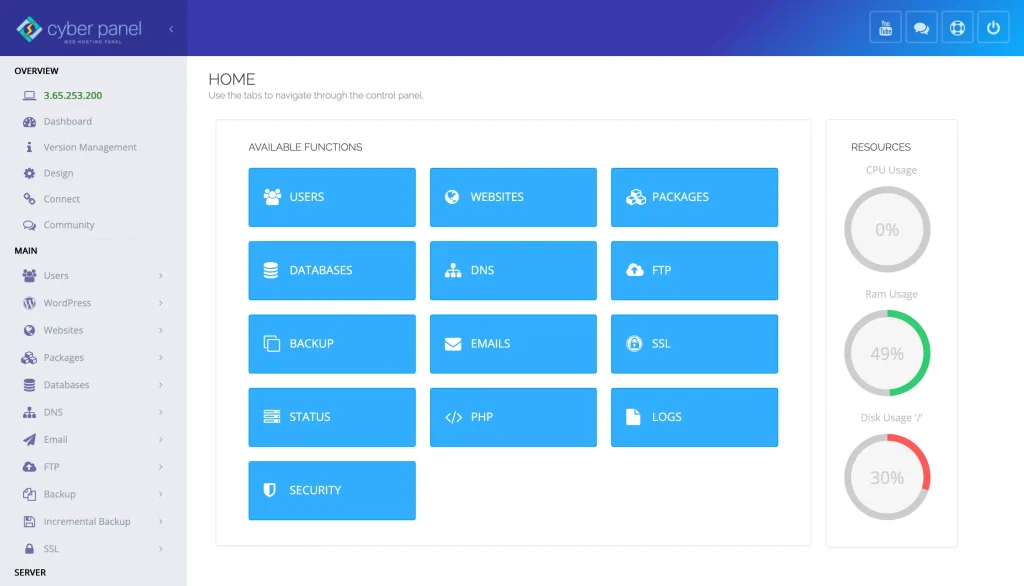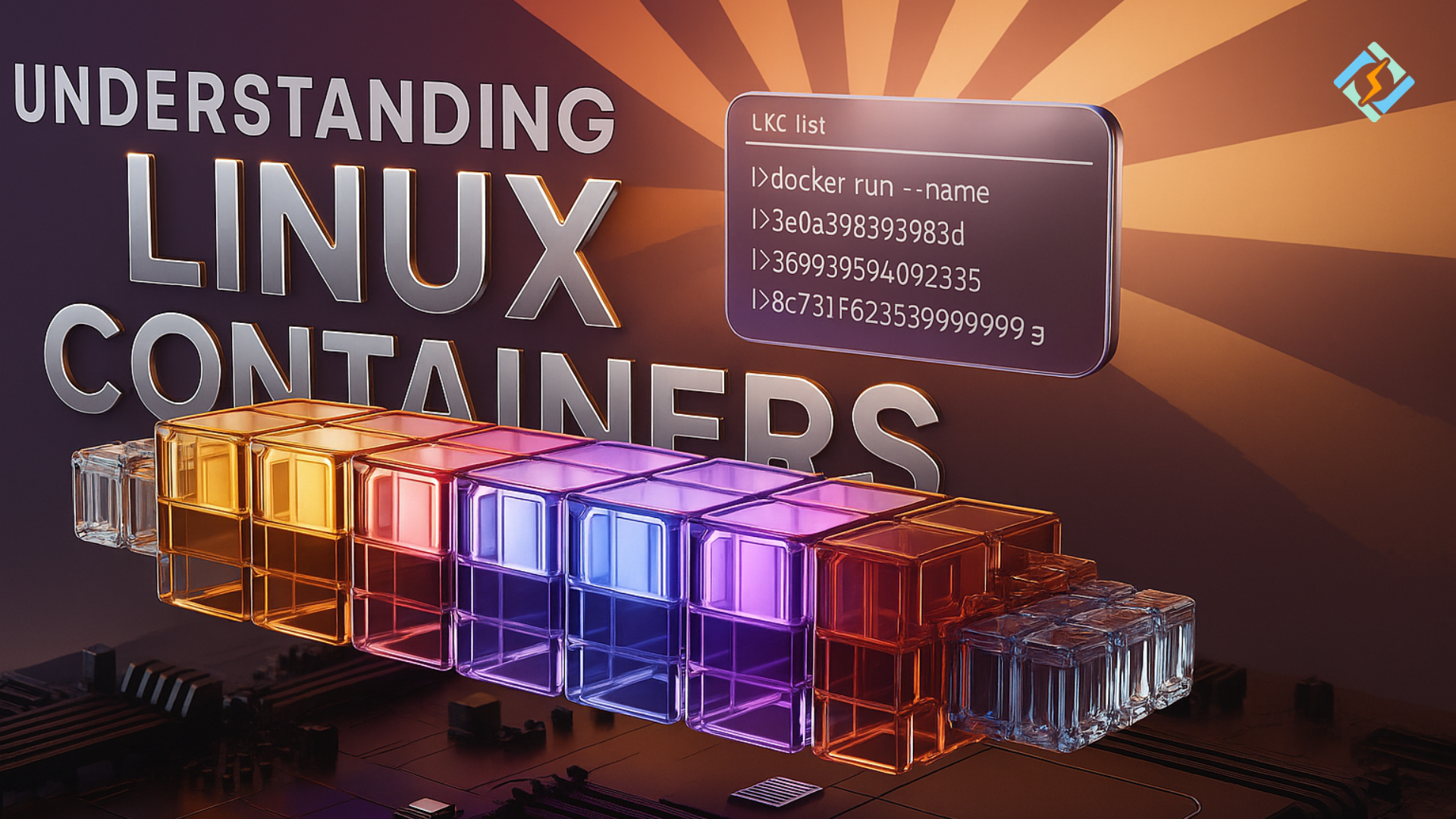Imagine running multiple apps, each with its own environment, on a single system and not getting them in each other’s way. That is the promise of Linux containers. They underpin a modern DevOps ecosystem that enables microservices, test automation, and cloud-native deployments. Unlike VMs, they share the host kernel and are very lightweight. Whether you’re deploying to a single Linux VM or across a Kubernetes cluster, Linux containers provide you with a seamless way to work consistently across your on-prem and cloud environments.
In this guide, we’ll give you an insight into LXC basics, how to use it, find a specific file containing some text on LXC containers, and also, how to run PowerShell scripts on a Docker Linux container. You will also learn to diagnose container stops and automate container management using CyberPanel. My goal is for this to all just make sense from imni-making to best practices with practical code, clear explanations, and real-world usage all in clean, concise order.
In this article, we will explore what Linux containers are and why they are important for developers, system administrators, and DevOps.
What Is A Linux Container And How Does It Work?
Linux containers are isolated OS environments running on the same kernel, so you can put all your apps and their dependencies into a package. Containers, unlike VMs, are lightweight and extremely fast, so it is perfect for development, testing, as well as production in cloud/on-prem environments.
They make use of the Linux kernel’s namespaces and cgroups to securely delimit resources (e.g., network, CPU, filesystems).
How Can You Bring the Linux Container LXC Into Use?
LXC (Linux Containers) is a system container tool. It includes the complete Linux user space and is frequently seen as Docker’s predecessor. You can install LXC via your distribution’s package manager, and work with containers using lxc-create, lxc-start, and lxc-attach, to create, launch, and attach to them, respectively.
Get exclusive access to all things tech-savvy, and be the first to receive
the latest updates directly in your inbox.
Install LXC on Ubuntu:
sudo apt update
sudo apt install lxc
lxc-create -t download -n mycontainer -- -d ubuntu -r focal -a amd64
lxc-start -n mycontainer
Access the Container:
lxc-attach -n mycontainer
How to Get Linux Find File Containing Text?
Use grep with the -r flag inside the container to search all directories for specific text. It’s useful when debugging config files or scanning logs inside running containers.
Example:
grep -r "Listen 80" /etc
Output:
/etc/apache2/ports.conf:Listen 80
This command searches for the string "Listen 80" recursively inside /etc.
How Can You Run a PowerShell Script On a Linux Docker Container?
Install and run PowerShell script on Linux Docker container stopping using Microsoft’s package. Then, mount or copy your .ps1 script into the container and execute it using pwsh.
Dockerfile:
FROM ubuntu
RUN apt update && apt install -y wget apt-transport-https software-properties-common
RUN wget -q https://packages.microsoft.com/config/ubuntu/20.04/packages-microsoft-prod.deb \
&& dpkg -i packages-microsoft-prod.deb
RUN apt update && apt install -y powershell
Run Script:
docker build -t pscontainer .
docker run -it pscontainer pwsh /path/to/script.ps1
Why Does a Linux Docker Container Keep Stopping?
Most containers exit immediately if the main process ends. This usually happens when using docker run without a foreground command like bash or a long-running app.
Solution:
docker run -it ubuntu bash
Best Practices
- Keep images small – use thin Docker images (e.g., Alpine) as base images.
- Do not keep states inside the containers; use volumes instead.
- Leverage health checks—make sure your containers are alive and well.
- Automated builds – leverage CI/CD pipelines to build and test images.
- Scan images for vulnerabilities – Trivy is a good tool here.
Role of CyberPanel in Managing Linux Containers

CyberPanel, a web hosting control panel, aims to make it easier to deploy and manage Linux containers — even for folks who just want to run web apps or development tools:
- Pull, run, and manage your Docker containers via a web-based interface with the Docker Manager.
- Run containerized apps like Node.js, Python, and yes, even WordPress, in minutes.
- Easily check container resource usage without needing to get back into the CLI.
- Automatic backup, firewall, and SSL with container deployment.
- Excellent for users wanting to run custom apps in both a non-standalone environment as well as inside an isolated environment that doesn’t require difficult terminal commands.
CyberPanel makes deployment with containers a point-and-click process – ideal for both DevOps novices and experts.
FAQs
Is Docker the same as Linux containers?

No, though Docker sits on top of Linux containers and adds a simplified UX and additional features, such as image layers and registries.
Can I host Windows apps in Linux containers?
Not natively. But it’s possible to run PowerShell or .NET Core in a Linux container so long as you are using the correct base image.
What is the difference between LXC and Docker?
LXC is more of a system-wide (and close to traditional) VM. Docker isolates many development complications and focuses on app packaging.
Wrapping Up!
Linux containers allow for faster, lighter, more consistent application deployment. From low-level system LXC to developer-friendly Docker, containers are changing the way organizations build, test, and deploy software. Once you know their ins and outs – how to manage them, how to debug them, ways to automate their lifecycle, like using CyberPanel, then you really start to get the most out of modern infrastructure.
Whether running simulations, web servers, or CI/CD pipelines, containers give you speed and control. Begin today, experiment on your machine, and scale with confidence.



